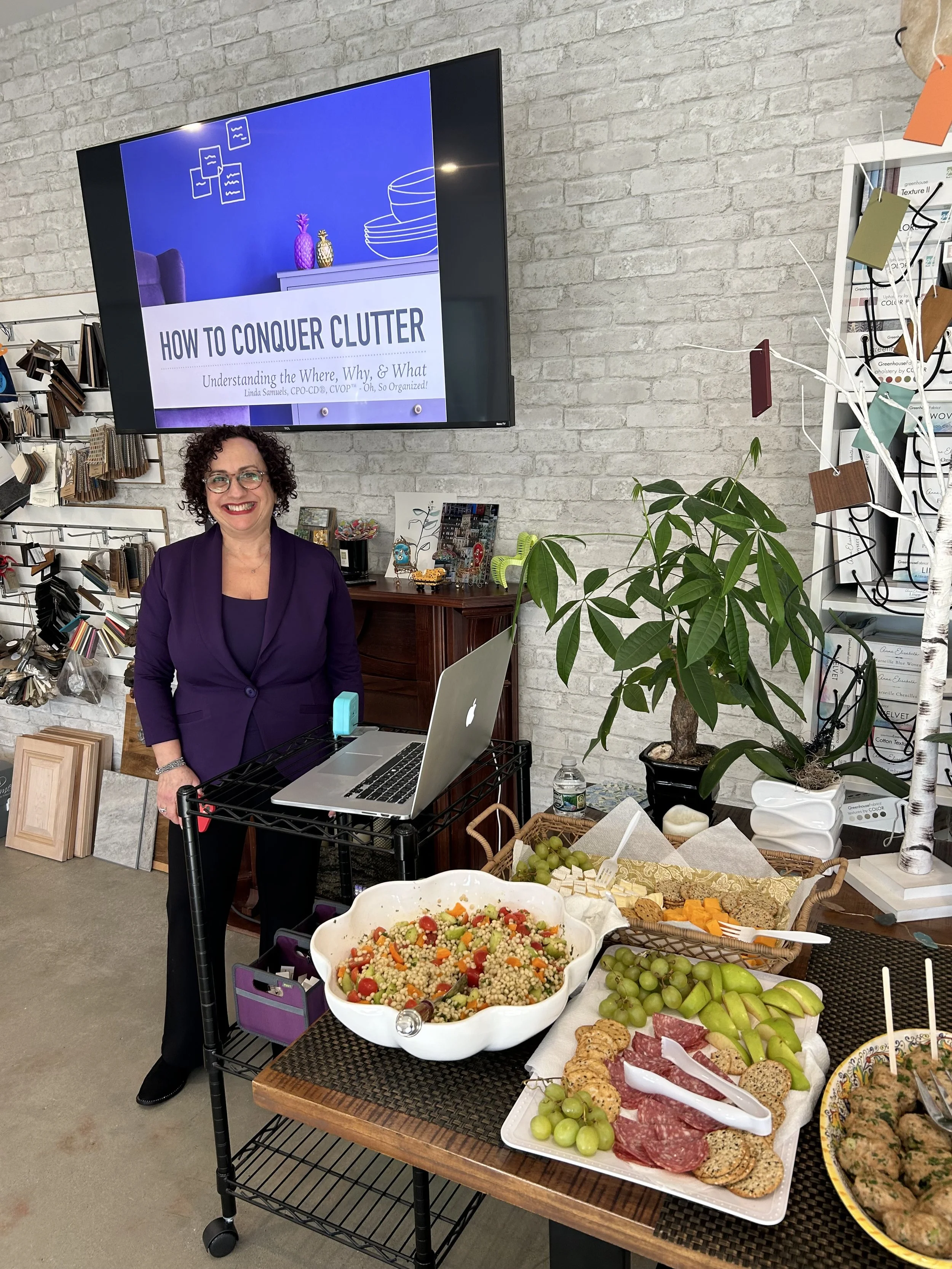Spring is a fun time of year. It’s a welcome change from grayer winter days. I’m continually amazed by the new beautiful blooms appearing every day. The daffodils are starting to wilt as the tulips and lilacs are emerging. Growth radiates hope and possibilities as the landscape becomes greener and more colorful.
Lightening up and letting go are integral to the spring season. However, sometimes, the letting go process can feel overwhelming. You might be trying to decide what to let go of or are challenged with activating.
There are many ways to work through to the other side. One letting go strategy is so effective that I highly recommend trying it. I’ve used this myself and with clients, and it always works. I’m using this exact strategy now, which I’ll share.
Value of a Deadline
You might want to edit but are having difficulty beginning. Perhaps you want to declutter because guests will be visiting. Maybe you feel like your space is piled with stuff that you no longer want. Or, you’re thinking about downsizing and letting go of the excess. Your “why” is clear, but you’re procrastinating.
One of the best letting go strategies is to combine a deadline with accountability. For example, I have a donation pick-up scheduled this week with GreenDrop®. They are a nationwide resource that accepts donations through pick-up or drop-off locations. Knowing GreenDrop® will be here on a specific date incentivizes me to let go now. I’ve been filling bags and boxes of things I want to release. When I set the deadline, I gave myself enough time by factoring in my other commitments.
Here's the thing. Could I let go of even more? Sure! However, given the time I have to edit, I’m letting go of enough to make a difference. The good news is I can always schedule another pick-up when I’m ready to say goodbye to more.
Letting Go Questions
I often think about letting go. Sometimes, it’s about unhelpful thoughts or time challenges. Yet, right now, I’m focused more on editing the physical stuff- things like clothing, household wares, linens, books, cosmetics, or pantry items.
When decision-making, I ask letting go questions like:
Has it overstayed its welcome?
Does it fit?
Do I still like it?
Is it damaged beyond repair or even repair-worthy?
Do I use or wear it anymore?
Is it expired?
Is it taking up space and no longer worth the real estate?
Has it served its purpose?
Is it necessary?
Am I ready to say, “It’s been nice knowing you?”
“One of the best letting go strategies is to combine a deadline with accountability.”
Do I ever get stuck? Of course. I expect it, but I don’t let that deter me. I focus first on the less challenging items. Then, I circle back to the trickier things and make a decision. I might keep those things a little longer or let them go. It’s a low-pressure, fluid process.
Do you use deadlines to facilitate letting go? What works for you? I’d love to hear your thoughts and invite you to join the conversation.
If you need help with letting go, reach out anytime. Please email me, Linda, at linda@ohsorganized.com, call 914-271-5673, or schedule a Discovery Call. Letting go is possible, especially with support.











